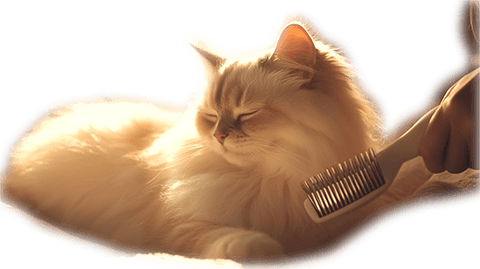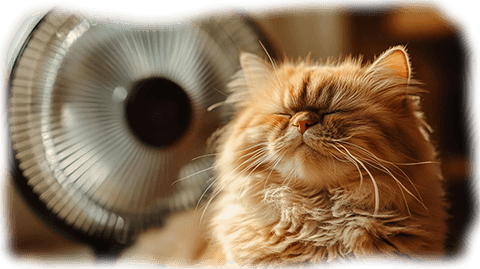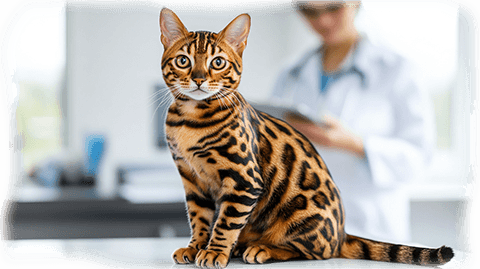Ragdoll Cats Health: Everything You Need to Know
Ragdoll cats are known for their striking blue eyes, affectionate nature, and relaxed personalities. However, like any breed, they have specific health needs and are prone to certain conditions. As a responsible pet owner, it’s essential to be informed about common health issues that affect Ragdoll cats and take proactive steps to keep them healthy. In this guide, we’ll cover the most common health concerns for Ragdolls, how to prevent them, and some tips for maintaining their overall well-being.
Common Health Issues in Ragdoll Cats

While Ragdolls are generally healthy cats, they are predisposed to certain health conditions due to their genetics. Here are some of the most common health issues Ragdoll cats may face:
Hypertrophic Cardiomyopathy (HCM)
Hypertrophic Cardiomyopathy (HCM) is the most common heart disease in cats and is especially prevalent in Ragdolls. It’s a genetic condition that causes the walls of the heart to thicken, making it harder for the heart to pump blood efficiently.
- Symptoms to watch for:
- Lethargy or weakness
- Difficulty breathing or open-mouth breathing
- Fainting spells
- Loss of appetite
- Prevention and care:
- While there is no cure for HCM, early detection can help manage the condition. Regular vet check-ups and heart screenings (echocardiograms) are crucial, especially if your Ragdoll has a family history of heart disease.
- If diagnosed, your vet may prescribe medications to help reduce the heart’s workload and improve quality of life.

Bladder Stones
Ragdolls are prone to urinary tract issues, including the development of bladder stones. These can cause discomfort and, if left untreated, can lead to more severe complications such as urinary blockages.
- Symptoms to watch for:
- Straining to urinate
- Blood in the urine
- Frequent trips to the litter box with little or no urine production
- Prevention and care:
- To reduce the risk of bladder stones, ensure your Ragdoll is well-hydrated. Offer fresh water daily, and consider providing wet food to increase their fluid intake.
- A balanced, low-mineral diet specifically designed for urinary health can also help prevent the formation of bladder stones.
- If your cat shows signs of a urinary problem, seek veterinary care immediately.
Gum Disease and Dental Problems
Ragdolls, like many cats, are prone to dental issues such as gum disease, which can lead to tooth loss and infections if not treated. Regular dental care is essential for maintaining your Ragdoll’s oral health.
- Symptoms to watch for:
- Bad breath
- Red or swollen gums
- Difficulty eating or chewing
- Drooling
- Prevention and care:
- Brush your Ragdoll’s teeth regularly with a cat-safe toothbrush and toothpaste (Amazon affiliate link) to prevent plaque buildup.
- Provide dental treats or toys designed to help clean teeth naturally.
- Schedule regular vet check-ups for professional cleanings and to catch dental issues early.

Obesity
Due to their laid-back nature, Ragdolls are more prone to obesity compared to other cat breeds. While their affectionate and calm behavior makes them wonderful companions, it also means they may not engage in as much physical activity as needed to maintain a healthy weight.
- Symptoms to watch for:
- Rapid weight gain
- Difficulty jumping or moving around
- Shortness of breath during mild activity
- Prevention and care:
- Feed your Ragdoll a balanced diet with the right portion sizes, avoiding free-feeding (leaving food out all day).
- Add fish oil supplements (Amazon affiliate link) to their diet for improved health.
- Incorporate regular playtime into their daily routine to keep them active. Use interactive toys (Amazon affiliate link) like feather wands or laser pointers to encourage movement.
- Monitor their weight and adjust their diet and exercise accordingly with the guidance of your vet.
Hairballs and Grooming-Related Issues
Ragdolls have a medium-to-long coat that requires regular grooming to prevent matting and the formation of hairballs, which can cause digestive issues if ingested in large quantities.
- Symptoms to watch for:
- Coughing or gagging
- Constipation or difficulty passing stool
- Vomiting up hairballs
- Prevention and care:
- Brush your Ragdoll’s coat at least 2-3 times per week to remove loose fur and reduce hairball formation.
- Provide hairball control cat food or supplements that help move ingested fur through the digestive system more easily.
- If your cat is vomiting frequently, consult your vet, as excessive hairballs can indicate an underlying digestive issue.

Genetic Testing for Ragdoll Cats
Since many health issues in Ragdolls are inherited, especially Hypertrophic Cardiomyopathy, breeders often perform genetic testing to ensure they are not breeding cats with known genetic disorders. If you are getting a Ragdoll from a breeder, it’s essential to ask for genetic test results to ensure your kitten has a lower risk of developing inherited conditions.
- Genetic testing can help identify:
- HCM genes
- Other potential hereditary diseases
Tips for Keeping Your Ragdoll Healthy
- Regular Vet Visits – Take your Ragdoll for an annual or bi-annual vet check-up to catch any potential health issues early. Preventive care is the key to a long, healthy life.
- Balanced Diet – Feed your Ragdoll high-quality cat food (Amazon affiliate link) that is appropriate for their age, weight, and health needs. Avoid overfeeding, as obesity can lead to more serious health problems.
- Grooming Routine – Brush your Ragdoll regularly to prevent matting and hairball issues. Not only will this keep their coat shiny and healthy, but it will also reduce the risk of digestive problems caused by ingested fur.
- Hydration – Make sure your cat always has access to fresh water. Consider a water fountain (Amazon affiliate link) to encourage them to drink more, as dehydration can contribute to urinary and kidney problems.
- Monitor Behavior – Keep an eye on your cat’s behavior and habits. Any changes in appetite, litter box use, or energy levels could be a sign of an underlying health issue.
Further reading: “Ragdoll Cats as Pets: Ragdoll Cat Information, Where to Buy, Care, Behavior, Cost, Health, Training, Grooming, Diet and a whole lot more! A Complete Ragdoll Cat Owner Guide” (Amazon affiliate link) by Lolly Brown.
Affiliate Disclosure
This post may contain affiliate links, which means I earn from purchases made through links. Please see the privacy policy page for more details.







